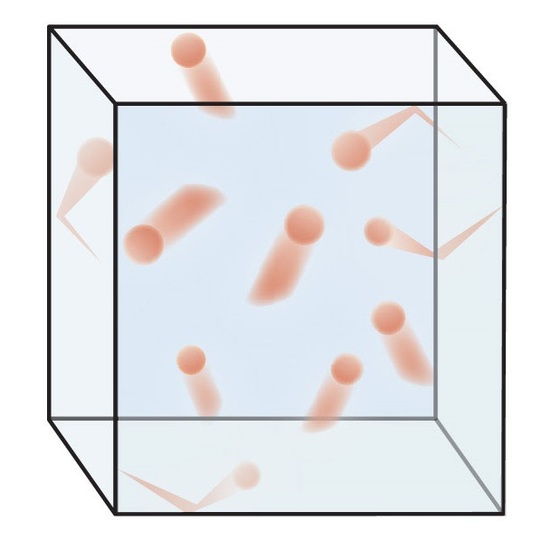11.7: A Particulate Model for Gases- Kinetic Molecular Theory
- Page ID
- 25489
The Learning Objective of this Module is to understand the significance of the kinetic molecular theory of gases.
The laws that describe the behavior of gases were well established long before anyone had developed a coherent model of the properties of gases. In this section, we introduce a theory that describes why gases behave the way they do. The theory we introduce can also be used to derive laws such as the ideal gas law from fundamental principles and the properties of individual particles.
A Molecular Description
The kinetic molecular theory of gases explains the laws that describe the behavior of gases. Developed during the mid-19th century by several physicists, including the Austrian Ludwig Boltzmann (1844–1906), the German Rudolf Clausius (1822–1888), and the Englishman James Clerk Maxwell (1831–1879), who is also known for his contributions to electricity and magnetism, this theory is based on the properties of individual particles as defined for an ideal gas and the fundamental concepts of physics. Thus the kinetic molecular theory of gases provides a molecular explanation for observations that led to the development of the ideal gas law. The kinetic molecular theory of gases is based on the following five postulates:

Although the molecules of real gases have nonzero volumes and exert both attractive and repulsive forces on one another, for the moment we will focus on how the kinetic molecular theory of gases relates to the properties of gases we have been discussing. In Section 10.8, we explain how this theory must be modified to account for the behavior of real gases.
The Relationships among Pressure, Volume, and Temperature
We now describe how the kinetic molecular theory of gases explains some of the important relationships we have discussed previously.
- \[P_{1}V_{1}=P_{2}V_{2}\]
- \[\frac{V_{1}}{T_{1}}=\frac{V_{2}}{T_{2}}\]
- \[P_{total}=P_{a}+P_{b}+P_{c} +...\]
- \[\frac{V_{1}}{T_{1}}=\frac{V_{2}}{T_{2}}\]
- \[P_{1}V_{1}=P_{2}V_{2}\]

